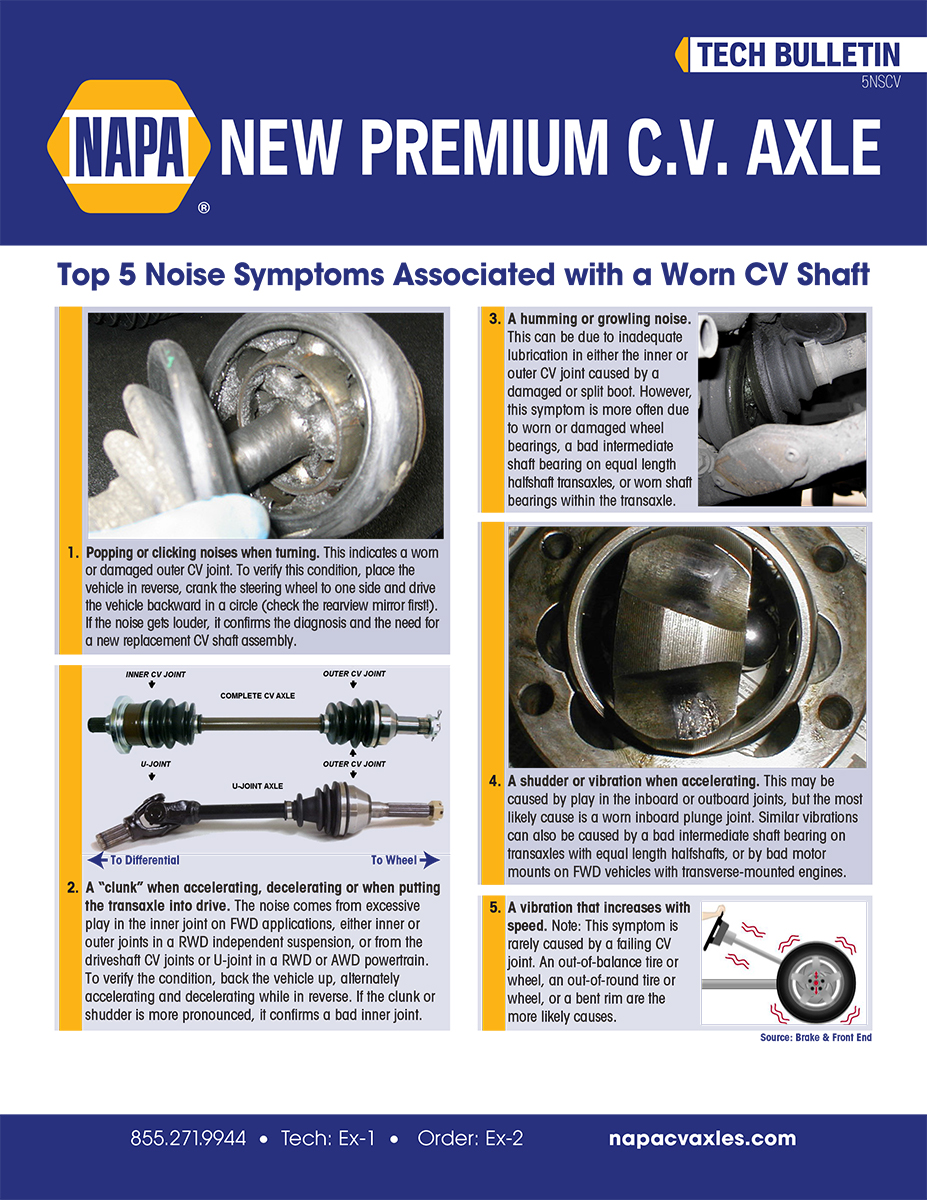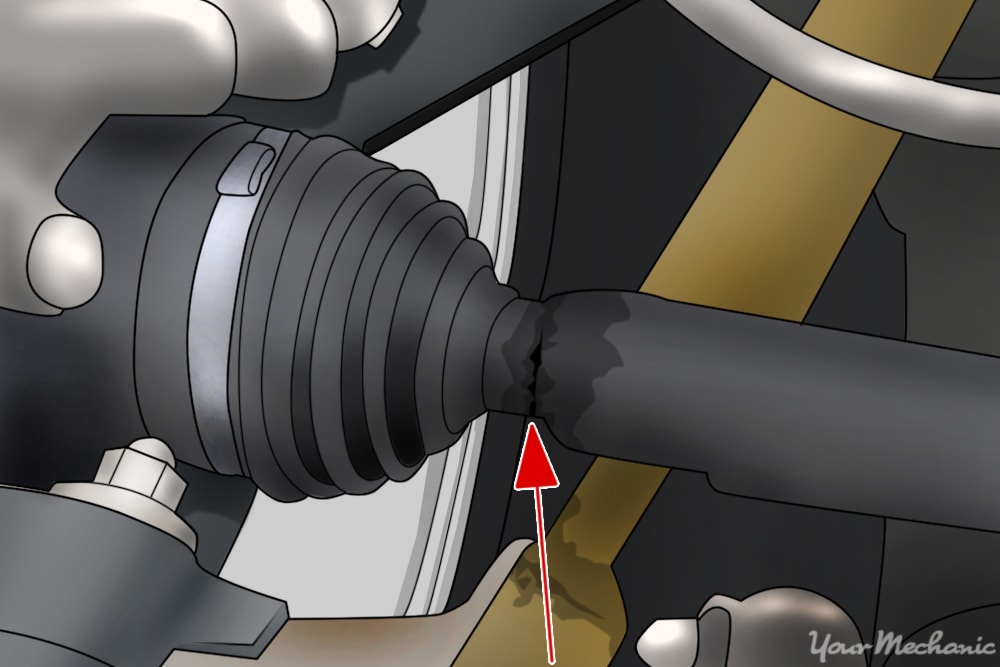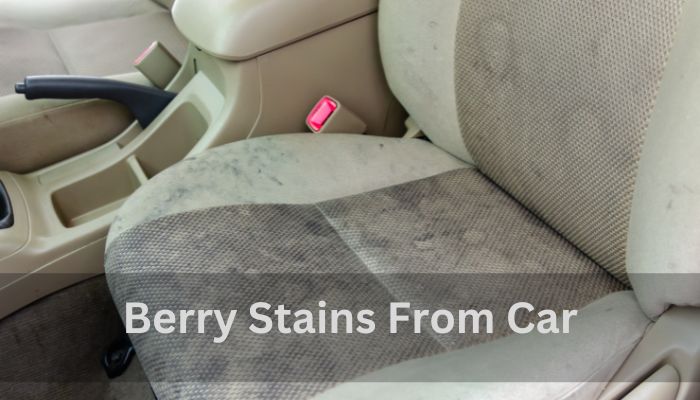How to Check Cv Axle
To check the CV axle, visually inspect for any damage, cracks, or leaks. Also, listen for any clicking or popping sounds when turning the vehicle.
If any issues are found, it’s best to consult a professional mechanic for further evaluation. When it comes to maintaining your vehicle’s performance and safety, it’s important to regularly check the CV axle for any signs of wear and tear.
The CV axle, or constant velocity axle, is a crucial component that transfers power from the transmission to the wheels. By understanding how to check the CV axle, you can ensure that your vehicle continues to operate smoothly and efficiently. We will discuss the steps to inspect the CV axle and identify any potential problems, allowing you to address them promptly and avoid more extensive damage in the future.

Credit: napacvaxles.com
Importance Of Maintaining Cv Axles
Regular maintenance of your vehicle’s CV axles is essential for both preventing costly repairs and ensuring vehicle safety.
Prevent Costly Repairs
By properly maintaining your CV axles, you can prevent expensive repairs down the line. Neglecting this crucial component can lead to premature wear and tear, resulting in the need for axle replacement or repair.
Maintaining your CV axles involves routine inspections to check for any signs of damage or deterioration. Addressing small issues early on can prevent them from causing more extensive damage to not just your axles, but also other related components of your vehicle’s drivetrain.
Regular maintenance of CV axles saves you money in the long run.
Ensure Vehicle Safety
Properly functioning CV axles are vital for your vehicle’s safety. These axles connect the wheels to the transmission, allowing for smooth power transmission and maintaining stability while driving.
Worn or damaged CV axles can impact your vehicle’s performance, particularly during turns or when accelerating. This can lead to issues such as vibration, noise, or even loss of control, jeopardizing the safety of both you and your passengers.
Regularly checking your CV axles and addressing any potential problems promptly ensures that your vehicle remains safe and reliable on the road.
Maintaining CV axles is crucial for ensuring your safety and the safety of others on the road.

Credit: www.yourmechanic.com
Signs Of A Failing Cv Axle
Spotting signs of a failing CV axle involves listening for clicking sounds while turning sharply, feeling vibrations, and inspecting for grease leaks near the wheels. Regular visual and auditory checks can help in early detection and prevent further damage.
Signs of a Failing Cv Axle When it comes to maintaining your vehicle, it’s essential to be aware of potential issues that may arise. One crucial component to watch out for is the constant-velocity (CV) axle. The CV axle is responsible for transferring power from the transmission to the wheels, allowing your vehicle to move forward or backward. Over time, the CV axle can wear down, leading to potential failures that can affect the performance and safety of your vehicle. By recognizing the signs of a failing CV axle, you can address the issue before it escalates, potentially avoiding costly repairs and safety hazards. Here’s how to detect signs of a failing CV axle. Clicking or Grinding Noises If you hear clicking or grinding noises when turning the steering wheel or while driving, this could indicate a potential issue with the CV axle. These sounds may occur when the CV joint becomes worn or damaged, causing the metal components to rub against each other as the axle rotates. Additionally, a damaged or worn CV axle can lead to excess play and movement within the joint, resulting in these noticeable noises. Vibrations While Driving Another sign of a failing CV axle is vibrations while driving. If you feel unusual vibrations, especially during acceleration or at higher speeds, it could be indicative of a problem with the CV axle. The vibrations may result from worn or damaged CV joints, causing instability in the axle as it rotates. These vibrations can be felt through the steering wheel or the vehicle’s floor, indicating a potential issue that needs to be addressed promptly. In addition to these key signs, it’s crucial to regularly inspect the CV axle for any signs of damage, such as tears or leaks in the axle boots. By addressing these issues in a timely manner, you can ensure the continued functionality and safety of your vehicle. Familiarizing yourself with these signs of a failing CV axle can help you stay proactive in maintaining your vehicle’s integrity and performance.Tools Needed To Check Cv Axles
Checking the CV axles is an important part of maintaining your vehicle’s drivetrain. Before getting started, make sure you have the right tools on hand to effectively inspect your CV axles. Here are the essential tools you will need:
Jack And Jack Stands
- Sturdy hydraulic floor jack
- Pair of jack stands
Flashlight And Gloves
- Durable flashlight to inspect the CV axles and surrounding areas
- Protective gloves for keeping your hands clean and safe during the inspection
Steps To Check Cv Axles
Welcome to this guide on how to check CV axles. The CV axles, also known as constant velocity axles, play a crucial role in transferring the rotational power from the engine to the wheels of your vehicle. Regularly inspecting the CV axles can help you catch any issues early on and prevent further damage to your vehicle. In this guide, we will walk you through the steps you need to follow to properly check the CV axles.
Lift The Vehicle Safely
The first step in checking your CV axles is to safely lift your vehicle off the ground. Make sure to use appropriate jack stands or a vehicle lift to ensure stability and safety during the inspection process. By lifting your vehicle, you give yourself better access to the CV axles, enabling a thorough inspection.
Inspect Cv Axle Boots For Tears
The CV axles are protected by rubber boots that keep them lubricated and prevent dirt, debris, and moisture from entering. Start by visually inspecting the CV axle boots for any signs of tears, cracks, or damage. Use a flashlight if necessary to get a better view of the boots, especially in hard-to-reach areas.
Important: A torn or damaged boot can lead to the lubricant leaking out and dirt entering the CV joint, causing premature wear and even failure.
Here’s an unordered list of steps for inspecting CV axle boots for tears:
- Check each boot thoroughly for signs of tears or cracks.
- Pay close attention to the areas where the boot meets the CV joint and the boot clamps.
- If you notice any tears or cracks, it is crucial to replace the damaged boot as soon as possible.
- Ignoring a damaged boot can lead to costly repairs in the future.
Pro tip: If you suspect any damage, it’s always a good idea to perform a test drive to listen for any unusual noises that may indicate CV axle issues.
Following these steps will help you in identifying any potential problems with your CV axles. Remember, regular inspections are key to maintaining the overall health of your vehicle and avoiding costly repairs in the future.
Interpreting Cv Axle Inspection Results
When interpreting CV axle inspection results, it is crucial to understand what to look for to determine the condition of the component. By examining specific indicators, you can assess whether the CV axle is in good condition or if it requires replacement.
Smooth Rotation Indicates Good Condition
Smooth rotation of the CV axle when turned by hand indicates that the joint is well-lubricated and the bearings are in good shape. A consistent and easy movement without any grinding or resistance signifies that the CV axle is likely in good condition.
Excessive Play Or Damage Requires Replacement
Excessive play or movement when rotating the CV axle could indicate worn-out bearings or damaged joints. Any looseness or clicking sounds are signs of potential damage or wear that may require immediate attention and replacement to prevent further issues.

Credit: m.youtube.com
Frequently Asked Questions For How To Check Cv Axle
How Can You Tell If A Cv Axle Is Bad?
To determine if a CV axle is bad, look for signs like loud clicking noises during turns, excessive vibration, grease leakage, or a noticeable decrease in acceleration. An inspection by a trained mechanic is recommended to accurately diagnose the problem.
How Do I Test My Cv Axle?
To test your CV axle, listen for clicking sounds when turning. Look for cracks or tears in the rubber boots. Perform a visual inspection for any signs of wear and tear. Also, jack up your vehicle and attempt to wiggle the axle.
Finally, take it for a test drive to check for any unusual vibrations or noises.
How Do You Manually Check Cv Joints?
To manually check CV joints, turn the steering wheel all the way left or right. Inspect the rubber boot for cracks, tears, or leaking grease. Grab the joint and wiggle it to check for excessive movement. Listen for clicking or popping sounds while turning.
Can A Cv Axle Go Bad Without Leaking?
Yes, a CV axle can go bad without leaking. Leaking is not the only sign of a faulty CV axle. Other symptoms include clicking or popping sounds during turns and vibrations. Regular maintenance and inspection can help identify CV axle issues before they escalate.
How Do I Know If My Cv Axle Is Bad?
A bad CV axle may exhibit clicking or popping noises, vibrations, or grease leaks.
When Should I Check My Cv Axle?
Regularly inspect your CV axle during routine maintenance or when you hear unusual sounds.
Can I Drive With A Bad Cv Axle?
Driving with a bad CV axle can lead to further damage and safety concerns. It’s not recommended.
Conclusion
Regularly checking your CV axle is crucial for ensuring the smooth operation of your vehicle. By following the steps outlined in this guide, you can easily assess the condition of your CV axle and address any issues promptly. Remember, a well-maintained CV axle will contribute to a comfortable and safe driving experience.
Stay proactive and take care of this vital component to prolong the lifespan of your vehicle.

